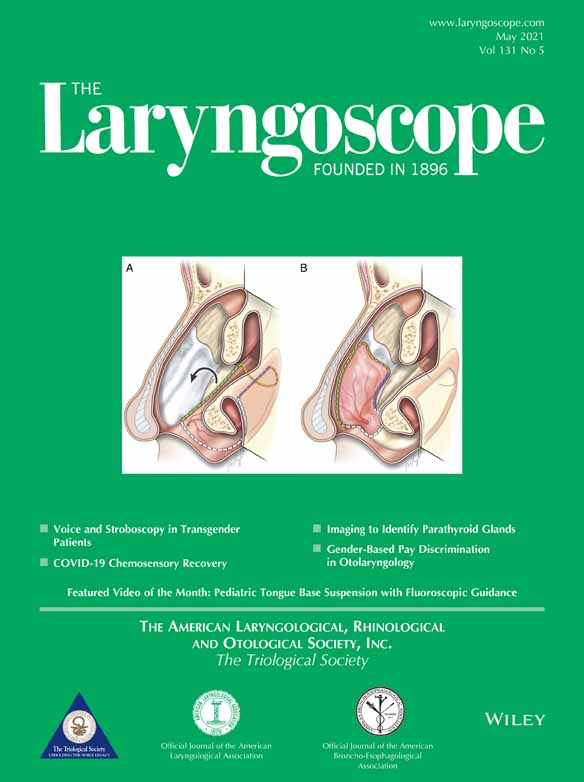Surgical, Oncological, and Functional Outcomes of Transoral Robotic Supraglottic Laryngectomy
Editor's Note: This Manuscript was accepted for publication on June 17, 2020.
The authors have no funding, financial relationships, or conflicts of interest to disclose.
Accepted by American Broncho-Esophagological Association as poster for the online Combined Otolaryngology Spring Meetings, April 24, 2020).
Abstract
Objectives/Hypothesis
To investigate the surgical, oncological, and functional outcomes of transoral robotic surgery (TORS) for the treatment of supraglottic squamous cell carcinoma.
Study Design
Retrospective chart review.
Methods
The charts of patients treated by TORS supraglottic laryngectomy (SGL) in an academic medical center were reviewed. The following outcomes were studied according to the tumor location: average robotic setup and operative times, mean estimated blood loss, postoperative complications, need of tracheotomy, refeeding characteristics, mean hospital stay, need of neck dissection and adjuvant therapy, 5-year local and regional controls, overall survival (OS), and disease-free survival (DFS).
Results
Seventy-five patients underwent TORS SGL. Tumors were classified as cT1 (32%), cT2 (52%), and cT3 (16%). Average robotic setup and operative times and the mean estimated blood loss were 15 minutes, 55 minutes, and 20 mL, respectively. The mean follow-up period ranged from 2 to 5 years. The 5-year OS and DFS were 80.2% and 94.3%, respectively. Overall, 34.6% of patients received adjuvant radiotherapy. The majority of patients (92%) restarted an oral diet within 24 to 48 hours postsurgery. Transient tracheotomy was performed in 8% of patients. Postoperative hemorrhages occurred in 12 patients (16.0%), lengthening the hospital stay (mean = 6.8 days). There were no outcome differences regarding the tumor location.
Conclusions
TORS is an effective and safe therapeutic approach for early- and intermediate-stages cancers. Oncological outcomes may be quite similar to other surgical approaches, including transoral laser and open surgeries. Future randomized controlled studies are needed for comparing TORS SGL with other surgical procedures.
Level of Evidence
4 Laryngoscope, 131:1060–1065, 2021




